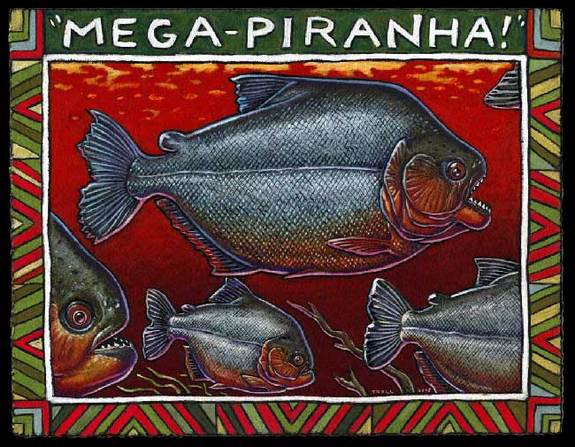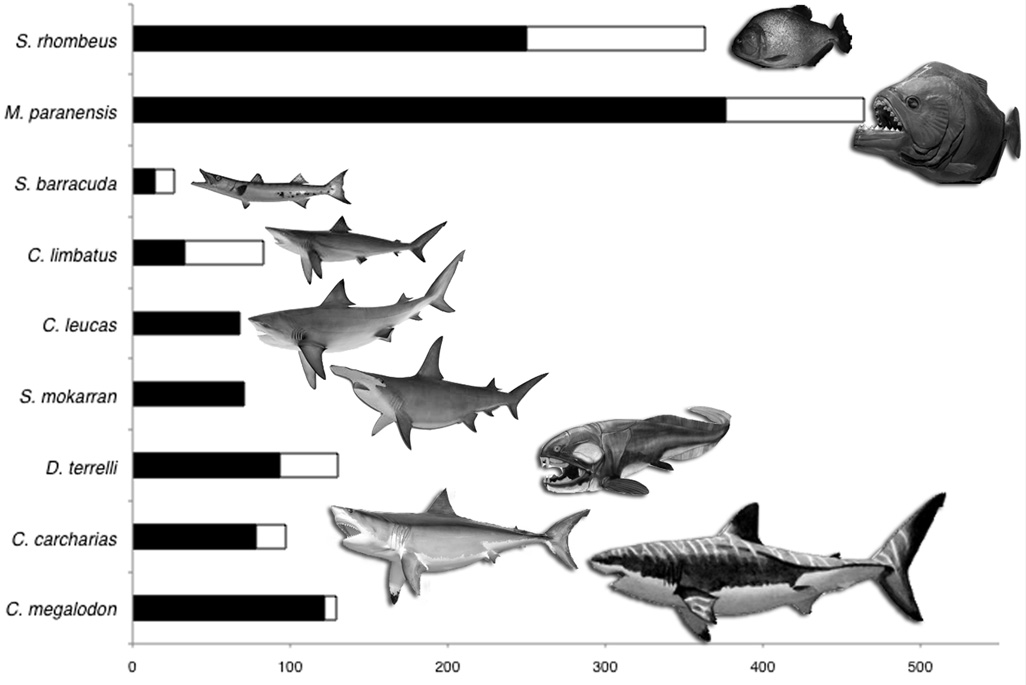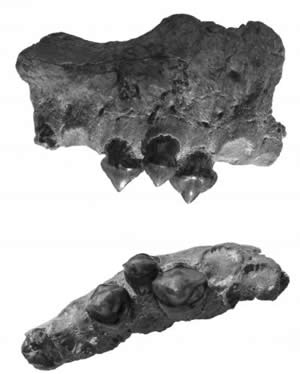A 3 foot long ancestor to the modern Piranha – Mega Piranha
Mega piranha was up to 3 feet long (1 meter) — a fish-beast four times as big as piranhas living today, studies of its jawbones indicate. . . . . might have been quite comfortable stalking cartoon animals in an “Ice Age” movie.
Another close relative of the piranha, called pacu (singular and plural), is not so scary. Pacu have squared-off stumps of teeth used for munching veggies. (For the record, tales of carnivorous piranhas eating humans are fictional.)
Now a newly uncovered jawbone of a (greater ancestor)”. . . . tie all these teeth together. Named Megapiranha paranensis, this previously unknown fossil fish. . . (is the greater ancestor to possibly both Pacu’s and Piranha’s.
Present-day piranhas have a single row of triangular teeth, like the blade on a saw, explained the researchers. Pacu have two rows of square teeth, presumably for crushing fruits and seeds.
The new fossil shows . . . teeth in a zig-zag row. .
“What’s cool about this group of fish is their teeth have really distinctive features. A single tooth can tell you a lot about what species it is and what other fishes they’re related to,” Dahdul said. Her phylogenetic analysis confirmed her hunch — Mega piranha seems to fit between piranhas and pacu in the fish family tree.
The Mega piranha fossil was originally collected in a riverside cliff in northeastern Argentina in the early 1900s,
(hiding evidence again. . . . )
but remained unstudied until paleontologist Alberto Cione of Argentina’s La Plata Museum rediscovered the startling specimen — an upper jaw with three unusually large and pointed teeth — in the 1980s in a museum drawer.
Although no one is sure what Megapiranha ate, it probably had a diverse diet, Cione said.
Other riddles remain, however. “Piranhas have six teeth, but Mega piranha had seven,” Dahdul said. ” (Genetic loss or maturity loss)
So what happened to the seventh tooth?”
“One of the teeth may have been lost,” Lundberg said. It’s an unanswered question. Maybe someday we’ll find out.”
Piranhas inhabit exclusively the fresh waters of South America, including the Amazon River. Tales of vicious attacks on humans are mythical.
“There are no documented human deaths from piranha attacks,” according to the Encarta encyclopedia and other sources. They’re known to eat worms and small fish. “A common feeding behavior is to nip off parts of the fins or scales from other types of fish,” the encyclopedia explains. “This cropping tactic allows the victim to survive and regrow the injured parts, providing a kind of renewable food resource for piranhas.”
by Greater Ancestors World Museum on Wednesday, July 27, 2011 at 7:17pm



Comment